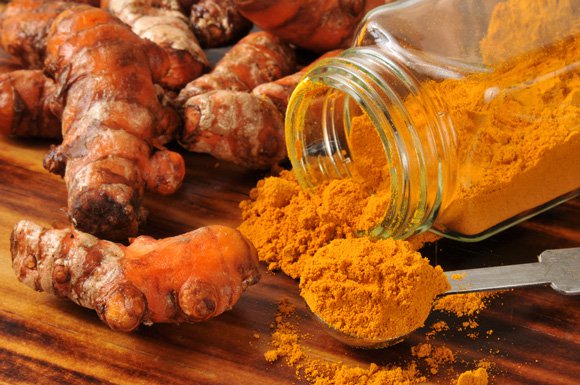** The week after we published this blog, an study was released showing that copper is key in the metabolization of fat. The more copper there is, the more easily fat is broken down to be used for energy. The researchers feel it would be worthwhile to study whether a deficiency in copper could be linked to obesity and obesity related diseases.
One of the traditional recommendations of Ayurveda is to drink water from a copper cup. According to the ancient science, water stored in a copper vessel has the ability to balance all the three doshas (Vata, Kapha and Pitta). Ideally water should stay in the copper container for at least eight hours. Ayurveda recommends starting the morning by drinking room temperature water that has been stored in a copper vessel overnight.
Copper is a mineral essential to the healthy functioning of our body. It is required in most processes that occur in our body, from cell formation to aiding in the absorption of iron. However, our body cannot synthesize copper. We need to get it from outside sources. Only about 25% of the US population is getting adequate copper in their diet each day.
Before I delve into the benefits of copper, is important to point out that, as with many things in life, it is possible to get too much of a good thing. According to the FDA, about 10 mg/day is enough to provide the benefits without causing any harm. Drinking one or two cups a day should be enough for you to enjoy all the healthful qualities of copper. If you are eating large quantities of foods that naturally contain copper, one cup in the morning will probably suffice. (See list of foods at the end of the blog.)
Benefits of Copper
Copper is known for its immense anti-bacterial, anti-viral and anti-inflammatory properties. It is known to be “oligodynamic” in nature, meaning that is has a sterilizing effect on bacteria. It has been shown to be especially effective against E.coli and S.aureus, two common bacteria that are known to cause severe illnesses. At the end of one study on copper, researchers recommended copper water storage as a solution to cleaning water in countries that do not have good sanitation systems.

Drinking water from a copper vessel is said to help the digestive system perform more effectively. This is because copper has properties that stimulate peristalsis (the rhythmic contraction and relaxation of the stomach that is needed to digest our food and to move it along the digestive tract.)
Research has shown that storing drinking water stored in copper pots kills harmful bacteria and reduces inflammation within the stomach. For this reason the practice is said to help detoxify the stomach, regulate the working of the liver and kidneys, aid with the proper elimination of waste and ensure the absorption of nutrients from food. Traditionally drinking from a copper cup is recommended for infections, indigestion and ulcers.
Drinking from copper is also said to help with weight loss. Apart from improving digestion, copper is thought to help the body break down fat and eliminate it more efficiently.
Copper is used to heal wounds because of its anti-bacterial, anti-viral and anti-inflammatory properties. In addition, copper is known to strengthen our immune system and aid in the production of new cells.
Because of this property —the production of new cells — some swear that copper helps reduce signs of aging. Due to its strong anti-oxidant and cell forming properties, copper fights off free radicals, one of the main reasons for the formation of fine lines on the face. Copper also helps in the production of new and healthy skin cells.
According to the American Cancer Society, copper has been found to help regulate blood pressure, heart rate and can help lowers one’s cholesterol and triglyceride levels. It also helps prevent the accumulation of plaque and has the documented effect of dilating blood vessels to allow better flow of blood to the heart.
Can copper help fight cancer? Studies have shown that copper complexes have considerable cancer-fighting abilities. This may be due to copper’s antioxidant properties that help fight off the ill effects of free radicals. Free radicals are associated with the development of cancer.
Copper stimulates our brain: Our brain works by transmitting impulses from one neuron to another through an area known as the synapses. These neurons are covered by the myelin sheath, which acts as a conductive agent, helping the flow of impulses. Copper assists in the synthesis of phospholipids that are essential for the formation of these myelin sheaths, thereby, making the brain work faster and more efficiently.
:Because copper has potent anti-inflammatory properties, it can be helpful in relieving the aches and pains caused due to inflamed joints
Finding a Copper Cup
Copper cups and vessels are easy to find. Be sure that you buy cups, mugs or pots that are pure copper. Avoid glazes that help keep the copper looking shiny and new. Rinse your new vessel with boiling water before you use it.
Don’t store your copper water in the refrigerator. Make it fresh every day.
How to Clean your Copper Vessel
Do not use a coarse sponge and soap to wash your vessel. Squeeze most of the juice out of one half of a lemon and rub the lemon on the inside of the vessel. Allow it to stand for a few minutes and then wash off with plain water.
Or, if you prefer, make a mixture of baking soda and water to coat the inside of the vessel and allow it to stand for a few minutes and rinse away the excess baking soda.
Foods Containing Copper
According to Wikipedia, foods contribute virtually all of the copper consumed by humans. The best dietary sources include seafood,organ meats, whole grains, legumes, and chocolate. Nuts, including peanuts and pecans are especially rich in copper, as are wheat and rye, lemons and raisins. Other food sources containing copper include potatoes, peas, red meat, some dark green leafy vegetables, coconuts, papaya and apples. In general, copper bioavailability is low in most plant foods.
A number of vitamin supplements include copper as small inorganic molecules such as cupric oxide. It is better to avoid these. These supplements can result in excess free copper in the brain as the copper can cross the blood-brain barrier directly. Normally, organic copper in food is first processed by the liver, which keeps free copper levels under control.
Ayurvedic Traditions
Ayurveda is a rich, living health science, While this ancient wisdom may be expressed in somewhat foreign terms compared to the technical medical language of today, it has stood the test of time. Week after week we see new research from modern science that backs up traditional Ayurvedic principles. The Raj Ayurveda Health Spa is proud to offer an authentic Ayurveda approach to healing to help restore balance and reawaken the body’s natural healing mechanisms.





